Warren Distinguished Lecture Series

The Warren Distinguished Lecture Series is made possible by a generous, renewing gift by Alice Warren Gaarden in 1961. Since 1989, we have been bringing in accomplished researchers and speakers from around the world to share their work with students, faculty, and friends of CEGE.
NOTE: The series will resume after a summer break. Please review our recordings of past sessions linked below!
Upcoming Events
The series will resume after a summer break. Please review our recordings of past sessions linked below!
There are no upcoming events matching your criteria.
Past Warren Lectures
Nitrogen Cycle in Natural and Engineered Ecosystems -- an Ecogenomics Perspective
Friday, April 8, 2016, 10:10 a.m. through Friday, April 8, 2016, 11:15 a.m.
George J. Schroepfer Conference Theater, 210 Civil Engineering Building
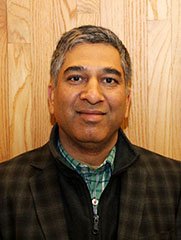
Ramesh Goel
Civil & Environmental Engineering, University of Utah
ABSTRACT:Managing the nitrogen cycle is regarded as one of the 14 grand challenges in the 21st century by National Academy of Engineering. Intense agricultural activities to meet the growing food market as well as point and non point pollution in urban areas have disrupted the global nitrogen cycle. Increased inorganic nitrogen loading in municipal wastewater leads to eutrophication of receiving water bodies. As a result, liquid waste streams containing nitrogen require treatment for nitrogen removal. Energy and carbon intensive nitrification and denitrification bio-processes are generally employed to manage nitrogen in liquid waste streams. New additions such as ANaerobic AMMonium OXidation (ANAMMOX) have provided innovative and energy efficient nitrogen removal alternatives to wastewater treatment plant managers to manage nitrogen in liquid waste streams. More advances include anoxic methane oxidation coupled denitrification of nitrite and nitrate by unique organisms. We have been studying these unique nitrogen transforming processes in ecosystems and have been applying the knowledge gained from ecosystem-level studies to develop wastewater treatment technologies. The ecology of the main players, i.e, prokaryotes, is being studied using whole community metagenomics and metatranscriptomics. This presentation will include an overview of recent advances in nitrogen cycle and will detail some of the findings in Dr. Goel’s lab related to the application of anammox for real centrate (digester reject water) treatment, coupling of anammox with autotrophic denitrification and, enrichment of anoxic methane oxidizing bacteria. The results of a study on the effect of external perturbations (e.g. toxic chemicals and temperature) on single stage partial nitrification-anammox reactors will also be presented.
Turbulent Flow Interactions with Complex Topography: From Multi-Scale Roughness to Barchan Dunes
Friday, April 1, 2016, 10:10 a.m. through Friday, April 1, 2016, 11:15 a.m.
George J. Schroepfer Conference Theater, 210 Civil Engineering Building
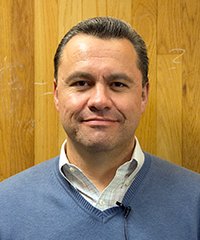
Ken Christensen
Aerospace and Mechanical Engineering, University of Notre Dame
ABSTRACT: Christensen highlights on-going studies of interactions between turbulence and complex topography. One scenario is multi-scale surface roughness commonly encountered on flow surfaces, such as turbine blades and hulls of ships, as well as in nature (e.g., gravel river beds). In industrial applications, realistic roughness is typically due to cumulative damage on a surface that was aerodynamically or hydrodynamically smooth but has become roughened via cumulative damage and/or deposition. Christensen's present effort is devoted toward identifying the impact of multi-scale roughness replicated from a turbine blade damaged by deposition of foreign materials on wall turbulence. Christensen also highlights on-going experiments of flow over barchan dunes.
A Phase-field Hydromechanical Model of Reservoir Simulation
Friday, March 25, 2016, 10:10 a.m. through Friday, March 25, 2016, 11:15 a.m.
George J. Schroepfer Conference Theater, 210 Civil Engineering Building
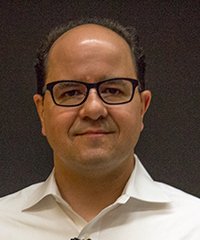
Blaise A. Bourdin
Mathematics, Louisiana State University
ABSTRACT: Variational models of fracture and damage have become very popular, largely because of the versatility their numerical implementation through "phase-field". Bourdin first describes the construction of a phase-field based coupled hydromechanical reservoir simulator, and then revisits the problem of a single hydraulic fracture propagating in an infinite impermeable medium in order to justify the research team's coupling strategy. Finally, Bourdin shows how a phase-field description of a system of cracks can be leveraged to model flow in a factured porous medium, describing the coupling of the flow and mechanics problems, and illustrating the properties of this model through various numerical simulations.
Microbial Life by Reductive Dehalogenation
Friday, March 11, 2016, 10:10 a.m. through Friday, March 11, 2016, 11:15 a.m.
George J. Schroepfer Conference Theater, 210 Civil Engineering Building
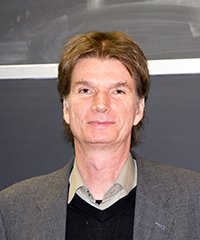
Alfred Spormann
Chemical Engineering and Civil/Environmental Engineering, Stanford University
ABSTRACT: Microbial reductive dehalogenation is the most efficient and cost-effective process to remove chlorinated aliphatic hydrocarbons from contaminated drinking water. The underlying microbiology has been revealing fascinating new biochemical, ecological, and evolutionary principles, all of which are key for successful bioremediation efforts. Bourdin will illustrate some of the new insights and show how subtle molecular variations on the biochemical scale can have large ecological and engineering implications.
Towards More Trustworthy Hydrologic Models: Evaluating Model Choices and Learning from Data
Friday, March 4, 2016, 10:10 a.m. through Friday, March 4, 2016, 11:15 a.m.
George J. Schroepfer Conference Theater, 210 Civil Engineering Building
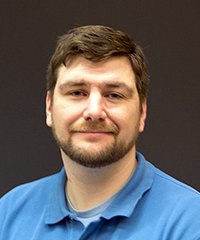
James R. Craig
Civil and Environmental Engineering, University of Waterloo
ABSTRACT: Numerical models of watershed hydrology are used to assess impacts of climate change and land use, to manage flood risk, to predict reservoir inflows, and to inform weather, carbon cycling, and nutrient transport models. Unfortunately, the challenge of building operational models that get the right answers for the right reasons is a considerable one: we need to address issues of uncertainty, upscaling, information loss, parameterization, soft data, faulty conceptual models, and a legacy of poorly constructed computational codes pushed beyond their original design. There is considerable uncertainty present when we use these models to interpret observation data and test hypotheses about watershed functioning. In this presentation, Craig discusses some of these issues, their potential solutions, and suggests some necessary steps for moving forward.
Extracting Energy from Wind and Water: Influence, Manipulation and Control of Boundary Conditions
Friday, Feb. 26, 2016, 10:10 a.m. through Friday, Feb. 26, 2016, 11:15 a.m.
George J. Schroepfer Conference Theater, 210 Civil Engineering Building
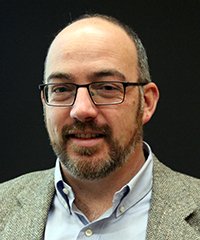
Michele Guala
Civil, Environmental, and Geo-Engineering, University of Minnesota
ABSTRACT: Energy production from renewable sources as wind, rivers, or tidal streams poses new challenges compared to conventional hydro-power or fossil-fuel plants. Not only is the flow impinging on the energy extracting device varying in time but also the boundary conditions may be varying. This seminar addresses the problem of inflow conditions on horizontal axis turbines deployed in rivers or in the atmospheric surface layer, and it illustrates how progressively complex external perturbations will manifest their signature on the turbine power and structural components. In addition to incoming bedforms in rivers, experiments in flumes or wind tunnels will be explored.The possibility of improving device performance and lifetime is considered, and a few preliminary experimental results are discussed including the case of floating turbines in the occurrence of sea waves. The work of Kevin Howard, Craig Hill, Chris Feist, Mirko Musa, Arvind Singh, Anne Wilkinson and Michael Heisel is gratefully acknowledged.
Long Life Pavement Design - The Road to a Sustainable Future
Friday, Feb. 19, 2016, 10:10 a.m. through Friday, Feb. 19, 2016, 11:15 a.m.
George J. Schroepfer Conference Theater, 210 Civil Engineering Building
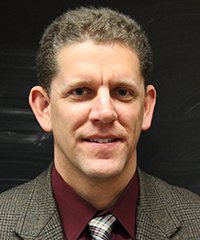
David H. Timm
Civil Engineering, Auburn University
ABSTRACT: Structural pavement design has been largely empirical based since the 1960's. Recent efforts by AASHTO to implement mechanistic-empirical design has led to a more advanced system, yet pavements are still defined to fail over a limited lifespan. A more sustainable option, Long Life or Perpetual Pavement Design, utilizes similar modern mechanistic tools to achieve higher-performing pavement structures over a much longer timeline. This seminar will describe the perpetual pavement design philosophy, introduce computational tools to facilitate such design and highlight research from the National Center for Asphalt Technology Pavement Test Track that supports and validates this design approach.
The Music in the Noise: Understanding Atmospheric Variability and Change
Friday, Feb. 5, 2016, 10:10 a.m. through Friday, Feb. 5, 2016, 11:15 a.m.
George J. Schroepfer Conference Theater, 210 Civil Engineering Building

Elizabeth A. Barnes
Atmospheric Science, Colorado State University
ABSTRACT: The global atmosphere is a noisy and chaotic place, and we are continually pushing the limits of its predictability. Barnes explores how this “noise” can confound our ability to quantify the atmospheric jet-stream response to a range of climate perturbations, for example, the ozone hole and loss of Arctic sea ice. Barnes provides examples of how the climate community has made use of identical simulations of state-of-the-art climate models to search for the music in the noise and the physical insights that have resulted. Barnes concludes with an example of how, sometimes, the noise can be the music itself.
In Search of the (Membrane) Holy Grail: A 20-Year Journey
Friday, Jan. 29, 2016, 10:10 a.m. through Friday, Jan. 29, 2016, 11:15 a.m.
George J. Schroepfer Conference Theater, 210 Civil Engineering Building
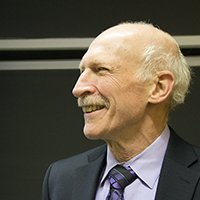
Mark Benjamin
Civil and Environmental Engineering, University of Washington
ABSTRACT: Natural organic matter (NOM) is universally recognized as a major foulant of membranes used for drinking water treatment. The fouling has been attributed to adsorption of NOM in membrane pores and/or to formation of a gel layer that covers the membrane surface. Colloids, humics, and polysaccharides have each been implicated as major contributors to this fouling material. Most efforts to reduce the impact of this fouling have focused on pretreatment with conventional coagulants or powdered activated carbon. We have developed a new micron-sized, granular adsorbent by mild heating of aluminum hydroxide and demonstrated that it can adsorb NOM rapidly and more efficiently than conventional additives.
Randomness in Mechanics of Materials
Friday, Jan. 22, 2016, 10:10 a.m. through Friday, Jan. 22, 2016, 11:15 a.m.
George J. Schroepfer Conference Theater, 210 Civil Engineering Building

Martin Ostoja-Starzewski
Mechanical Science and Engineering, University of Illinois at Urbana-Champaign
ABSTRACT: Microstructural randomness is present in just about all solid materials. When dominant (macroscopic) length scales are large relative to microscales, one can safely work within classical, deterministic solid mechanics. However, when the separation of scales does not hold, various concepts of continuum mechanics need to be re-examined and new methods developed. Ostoja-Starzewski focuses on scaling from a Statistical Volume Element (SVE) to a Representative Volume Element (RVE).